Giacomo Aldegheri
Hacking Generative Models with Differentiable Network Bending
Oct 07, 2023



Abstract:In this work, we propose a method to 'hack' generative models, pushing their outputs away from the original training distribution towards a new objective. We inject a small-scale trainable module between the intermediate layers of the model and train it for a low number of iterations, keeping the rest of the network frozen. The resulting output images display an uncanny quality, given by the tension between the original and new objectives that can be exploited for artistic purposes.
Category-orthogonal object features guide information processing in recurrent neural networks trained for object categorization
Nov 15, 2021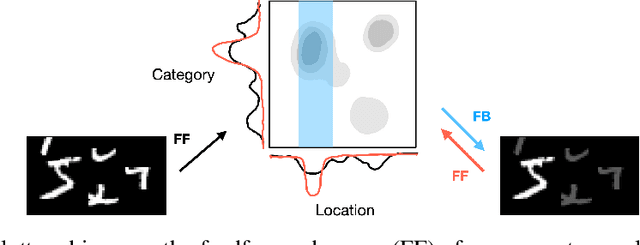
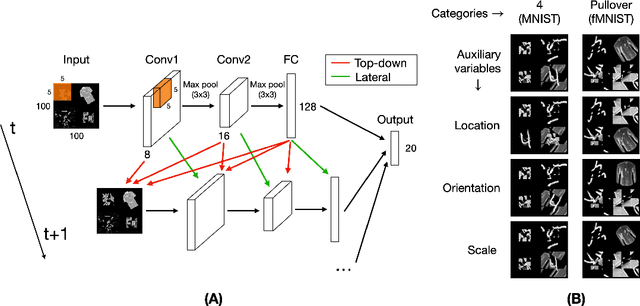
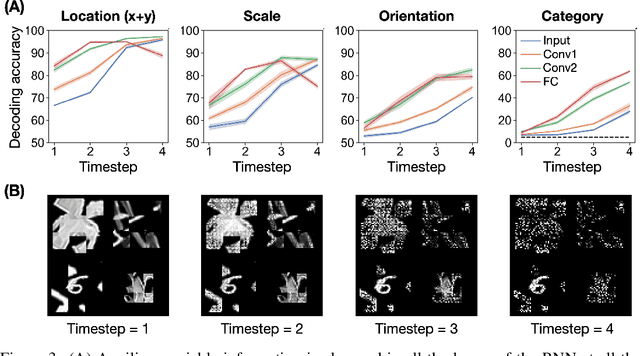
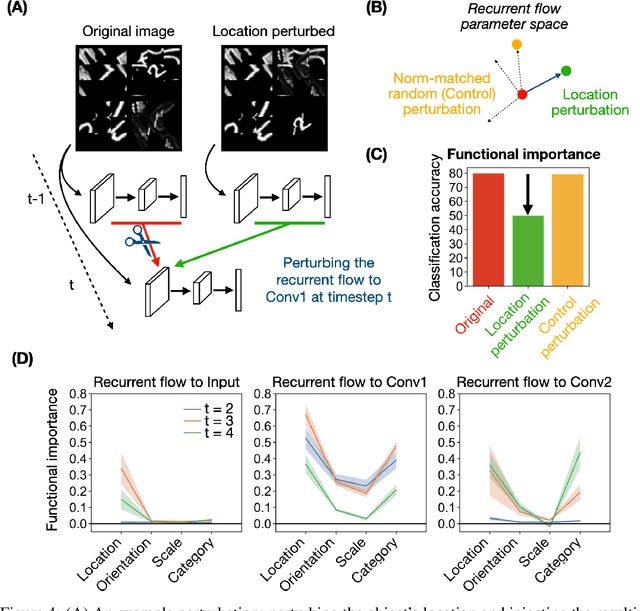
Abstract:Recurrent neural networks (RNNs) have been shown to perform better than feedforward architectures in visual object categorization tasks, especially in challenging conditions such as cluttered images. However, little is known about the exact computational role of recurrent information flow in these conditions. Here we test RNNs trained for object categorization on the hypothesis that recurrence iteratively aids object categorization via the communication of category-orthogonal auxiliary variables (the location, orientation, and scale of the object). Using diagnostic linear readouts, we find that: (a) information about auxiliary variables increases across time in all network layers, (b) this information is indeed present in the recurrent information flow, and (c) its manipulation significantly affects task performance. These observations confirm the hypothesis that category-orthogonal auxiliary variable information is conveyed through recurrent connectivity and is used to optimize category inference in cluttered environments.
Modulation of early visual processing alleviates capacity limits in solving multiple tasks
Jul 30, 2019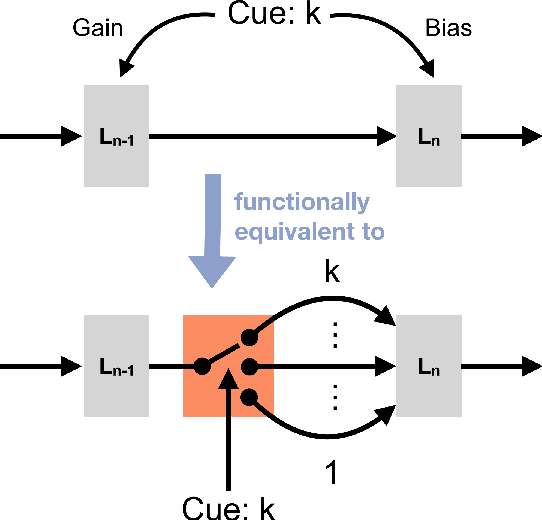
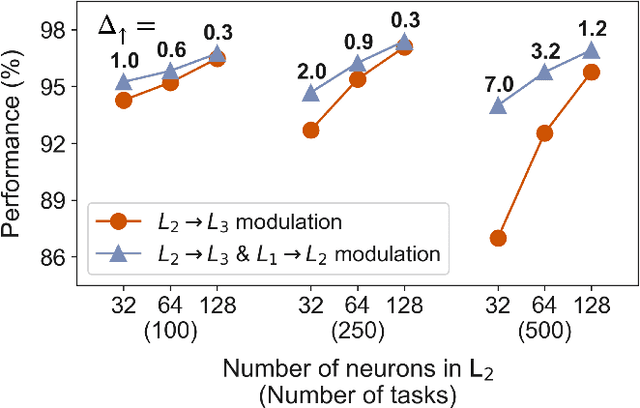
Abstract:In daily life situations, we have to perform multiple tasks given a visual stimulus, which requires task-relevant information to be transmitted through our visual system. When it is not possible to transmit all the possibly relevant information to higher layers, due to a bottleneck, task-based modulation of early visual processing might be necessary. In this work, we report how the effectiveness of modulating the early processing stage of an artificial neural network depends on the information bottleneck faced by the network. The bottleneck is quantified by the number of tasks the network has to perform and the neural capacity of the later stage of the network. The effectiveness is gauged by the performance on multiple object detection tasks, where the network is trained with a recent multi-task optimization scheme. By associating neural modulations with task-based switching of the state of the network and characterizing when such switching is helpful in early processing, our results provide a functional perspective towards understanding why task-based modulation of early neural processes might be observed in the primate visual cortex
 Add to Chrome
Add to Chrome Add to Firefox
Add to Firefox Add to Edge
Add to Edge